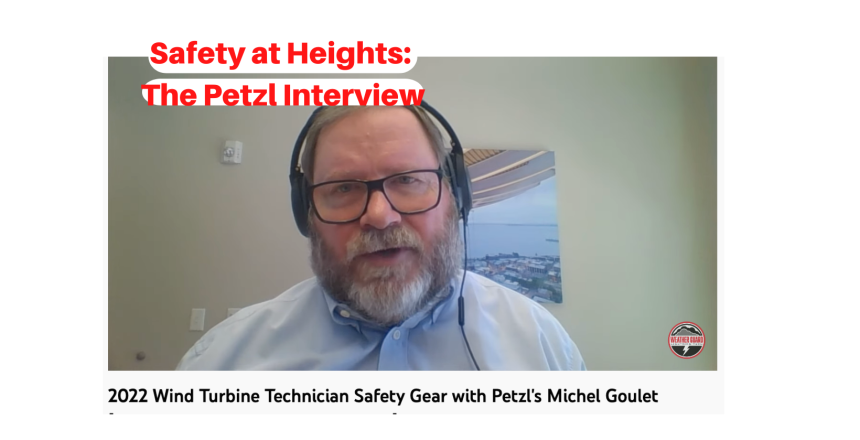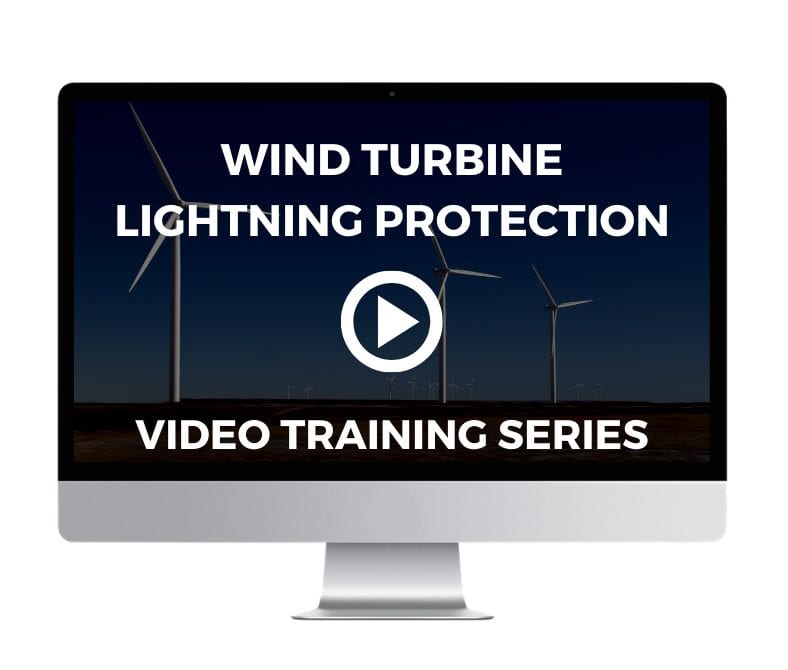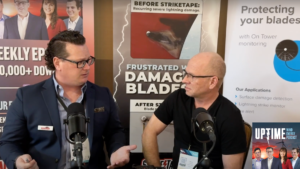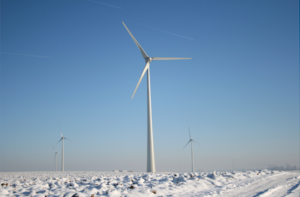Petzl is in business of providing fall protection and rescue equipment for many industries, including wind energy. We recently discussed safety at heights with Petzl’s Marketing Development Manager, Michel Goulet, who shared some helpful tips on selecting, inspecting and disposing of safety and rescue equipment.
Listen to the full interview here.
“You need to use the right gear in the right spot, of course.”
Michel Goulet, Petzl
Helmets: Selecting the Proper Gear
Helmets are designed to meet the demands of specific jobs. In the United States, OSHA mandates the use of an ANSI certified helmet (Z89.1), and such certification means that the head protection has stood up to a variety of puncture tests, flame tests, and more. Some employers have very narrow specifications, others give ropes technicians greater flexibility in selecting a helmet.
Goulet said that a helmet should be considered as a head protection system. In the wind industry, that system should include hearing protection, electrical protection, headlamp attachments, and some other features depending on work conditions.
When specifying a helmet, as with other equipment, fit and comfort must be part of the safety equation.
“Many technicians think they want a type 2 helmet,” Goulet said, but because they can be heavy, “sometimes they find out it’s not good for a long work shift.”
Other important notes from the interview:
- A 4-point chin strap is typically recommended. Importantly, chin straps are designed to separate at about 100lbs of force, in case they become entangled in hardware and risk putting undue force on a worker’s neck. Clearly, chin strap specs should be an important purchase criterion.
- Attachment points for headlamps are important for many industries. As with many features, the conditions you’re most likely to work in will dictate or limit your choices.
- Headlamps can be very bright (500- 900 lumens) and again, weight may be the deciding factor. A headlamp powered by AAA batteries will be heavier than one that uses lithium-ion batteries.
- The preferred type of face shield is another factor to consider. While a full face shield is best for some tasks, a partial may be recommended for others, especially in very hot environments.
- Date of manufacture: any component w/textiles (harnesses, slings, helmets) in it has a 10-year shelf life…there’s natural deterioration of nylon and other materials.
This is only a partial list of considerations regarding helmet selection, and when it comes to personal protective equipment (PPE). helmets are only the beginning.
We encourage you to listen to the full interview here.
Turbine Safety Training, Certification, and Standardization for Ropes Technicians
As with any developing industry, standards and certifications are important and they are also fluid. During our interview, Goulet noted some recent changes to ANSI standards and how Petzl is responding. And Petzl, like most companies in the industry, works closely with the Society of Professional Ropes Technicians and Industrial Rope Technicians Trade Association.
SPRAT recently logged its opposition to the most recent ANSI updates on descent control, noting in its statement:
Though falls from height remain a leading cause of workplace fatalities in the United States (Source: BLS), rope access workplace fatalities have remained practically non-existent. This…is partly attributable to a number of established rope access organizations that provide certification schemes and accessible standards to facilitate a comprehensive rope access program meeting regulatory requirements.
SPRAT maintains that the ANSI update to the descent control device standard places “unnecessary restrictions on rope access training, systems, and equipment.” More details are on the SPRAT website, and further discussion is expected at SPRAT’s Mid-Year Meeting in July.
Hear what Petzl’s Michel Goulet said about the new ANSI standard on the Uptime podcast
Other Turbine Safety Resources
While our interview focused on PPE for ropes technicians – specifically safety helmets – Goulet noted that Petzl has a number of videos and other information with additional safety information on the company website.
The function of a rescue kit is to transport a fall victim safely to the ground – or a platform- where they can be treated, Goulet said.
“If you’re staying within the nacelle or tower, generally speaking, fall protection equipment is the primary thing you need, but no fall protection system is complete without a rescue method or rescue kit that would allow you to intervene quickly in the event of somebody … falling or becoming incapacitated,” Goulet said.
Safety Gear Beyond Helmets
Sharp edges inside turbine and nacelle can damage ropes, creating an obvious safety risk. Other obstacles inside the turbine present other risks, sometimes less obvious – like hot or electrically charged surfaces.
Goulet briefly described some of Petzl’s descent control gear, including models that offer an anti-panic mode to help prevent falls.
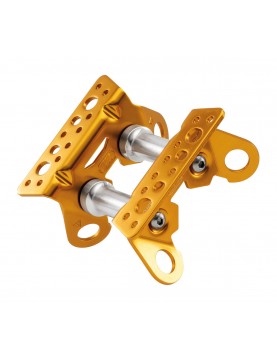
The Protect Plus is a Velcro shield that protects a rope that may come in contact with hot surfaces or rough edges that could compromise the rope’s integrity, and the Roller Coaster which helps ropes roll over obstacles.
Climbing safety gets more complicated as you bring more repair equipment. SPRAT says any tools or equipment that weigh more than 10 lbs must have its own tether or belay ropes. While it’s incumbent upon manufacturers to make it as easy as possible to connect and disconnect the equipment from the tether, employers and wind farm operators need to consider how robots can carry equipment for technicians or allow techs to work safely from the ground.
See what robots are doing in the field.
Inspecting PPE and Equipment Maintenance for Ropes Technicians
Once safety gear is in use, maintaining it is essential.
Goulet points out that logging the date of manufacture is important, because “there’s a natural deterioration of nylon and other materials.” Any component that includes textiles (harnesses, slings, helmets) has a 10 year shelf life, he said.
Goulet said that OSHA recommends a thorough check of PPE at least once a year, but most companies require more frequent inspections, often on a regular 3-month or quarterly basis. Corrosion is of extra concern for equipment used on offshore sites, so more frequent inspections are warranted.
Petzl recommends a quick inspection of straps, fasteners, and weight-bearing seams before each use, paying particular attention to comfort and safety elements – that means no cracks, no rust, etc. Petzel offers a PPE inspection procedure as a download on its website, and the company also offers a 3-day class on equipment inspection and PPE management.
Don’t miss upcoming interview with wind industry experts. Stay informed with the weekly Uptime Tech News.

